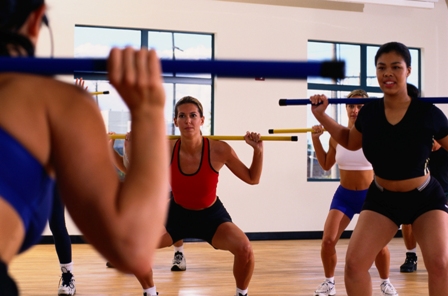Spotting Techniques for Weight Trainers - Maximize your lifts

Spotting Techniques for Weight Trainers in the gym
Spotting is normally used in weight training, and it involves one or several other trainers supporting a person doing a repetition on exercises involving heavy weights for the purpose of enabling the person carry more weight than they will normally do and also for helping the other push himself as far as possible without fear of failure injury.
A good spotter performs three functions;
- A good spotter must be able to protect the lifter from injury
- A good spotter must be able to help the lifter in maintaining proper lifting techniques
- A good spotter must also know how to motivate the lifter and at what times to communicate to them.
In what situations is spotting necessary?
Not all weight training exercises require spotting. Spotting is usually needed in situations when the lifter may sustain an injury if not supported. It is also common to use a spotter when a lifter wants to go above his normal limits, taking on greater weight than he would normally do. This permits them to progress to a new level of strength and power quickly, letting them pass previous thresholds with the security of having someone to support them in case they can’t finish a repetition, or to help them finish more repetitions.
Spotting techniques
Spotting has both a psychological effect and a physical effect on the lifter and both of these are important to the success of the lifter in going above their threshold and in lifting more, and also to the success of the spotter.
Psychologically, a good spotter should be able to know when the lifter actually needs help and when to positively lay a hand on the weight for support. For example, in the case of bench presses, the spotter stands over the lifter ready to intervene in case the lifter needs help.
This can be done in two ways.
1. One of the most common ways this is done is by placing the hands a few inches below the weight to catch it if the lifter fails, or
2. To place a hand on the bar as if assisting the lifter, but not actually doing anything until the lifter can do no more.
Usually without knowing, many lifters think they are being assisted and will do a few repetitions more which are good for building new levels of strengths.
Spotter offers motivation
Another function of psychological help in spotting is in motivation of the lifter. Knowing when and how to motivate a user can make a great difference in their performance.
Spotter offers feedback on exercise techniques
Physical help offered by the spotter is also valuable in taking the lifter to new heights of training. In order to successfully assist the lifter, the spotter must be able to gauge correctly how to position themselves so as not to distract the user and must also be able to judge when to help and how to help the lifter. Here are some guidelines to enable you spot more effectively;
Talk to the Lifter
Ask the lifter of the range he is capable of doing and what he expects to do. In this way you know when to really start paying close attention to the repetitions so that you don’t intervene too early or too late.
Try not to take away the weight completely from the person even if they are struggling, unless they request it of you. Just placing your hand on the weight might make a great difference in assisting the lift.
Different exercises require you to position yourself differently. In any case always make sure you are positioned in a way that you can take the weight off the lifter as needed without complications.
Know where the sticking points of exercises are. These are usually the points that are most difficult to overcome in weight training exercises. Once a lifter is at this point, assisting him to get over this point and then letting him do the rest is a good technique of spotting.
Staying focused on the lifter is essential as a minor distraction might cause you to leave the lifter to injury.
ExerciseGoals.com Recommends the Best Exercises ebook...

Just click here to find out 53 new innovative exercises
to eliminate boredom, plateaus from your workouts
and take your workouts to next level.
Related Articles
- Advanced Weight Lifting Techniques
- Exercise Database
- How to Select a Gym for you.
- Major Muscle Groups and Exercises.
- Split Training Routines.
- Ideal Weight Training Frequency, sets, reps and FAQs.
- How to grip Weight Bars Correctly for better lifts.
- How to find the correct Lifting Speed.
- Proper Breathing during Lifting.
- How to Spot in Weight Training Room.
- When to Increase/Decrease Training Loads.
- Weight Training Sets
- Weight Training Reps
- Exercise Order/Sequence
- How to determine correct training loads
- Variety in your Training
Back to Weight Training Homepage.
Weight Training Quick Links
Body Types |Gym Membership |Weight Training Workouts |Weight Training Benefits |Beginner Weight Training |Advanced Weight Training Tips |Home Gym Exercises |Weight Training at Home |Weight Training Software |Weight Training Journals/Logs |Weight Training for Kids |Weight Training for Seniors/Elderly People |Weight Training for Middle Ages Men over 40 | Weight Training Videos | Weight Training Tips & Exercises |Upper Body Weight Training |Before/After Weight Training Pictures |




